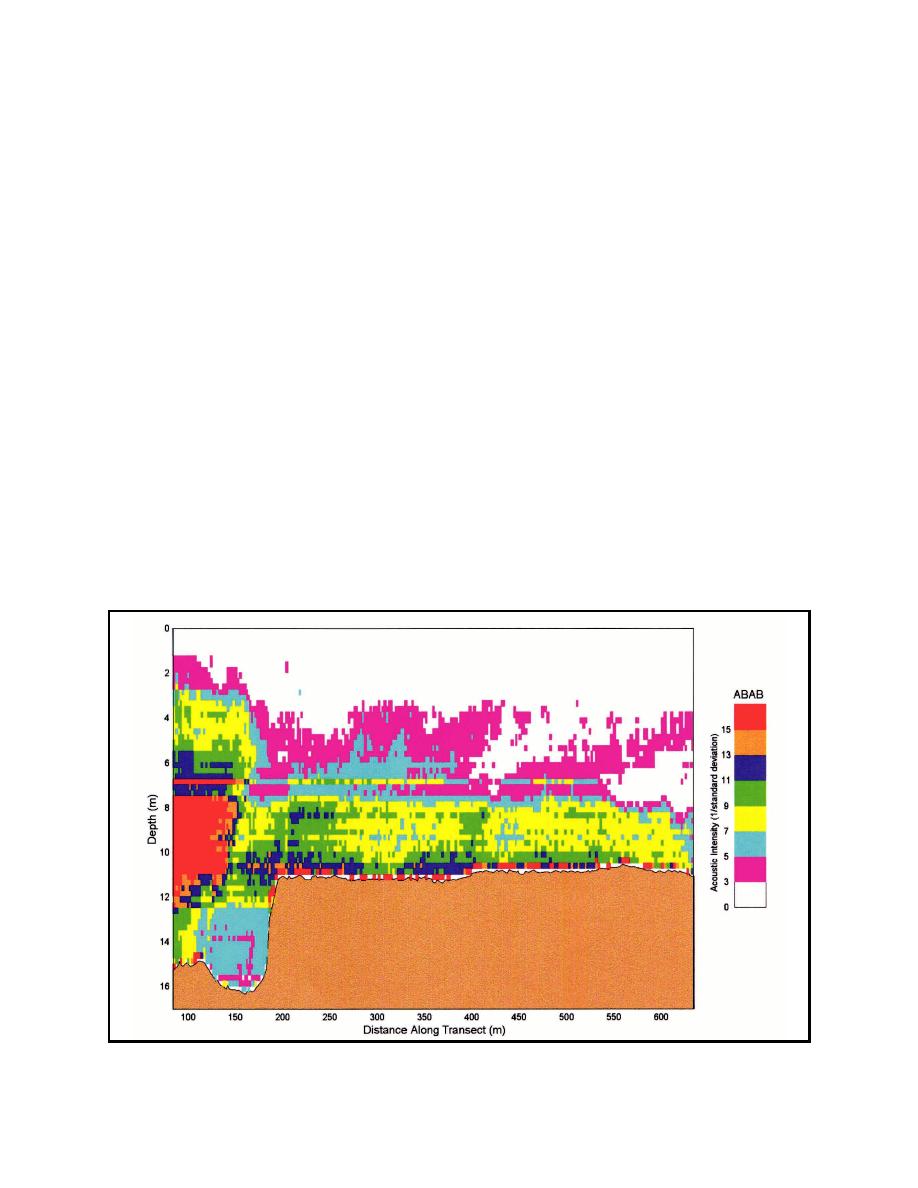 |
||
|
|
||
|
Page Title:
Figure 7. Cable Arm Clamshell, 5 August 1999 |
||
| |||||||||||||||
|
|
 ERDC TN-DOER-E7
April 2000
Figure 5 (Transect 8) shows an area monitored after the Wheeler was well clear of it. The transect
is displayed from west to east. There is still some ABAB at approximately the depth of the screws,
and there is also some at approximately the same depth to the right of where the Wheeler crossed
the transect, at about 150 m across. This is believed to be ABAB from a ship screw cavitation. A
tug was observed pushing barges down the channel just before the transect was run. A residual
plume of suspended sediment in the area dredged is shown by the ABAB in this region on the west
side of the channel. The reason for ABAB being observed on the east bank of the channel is
unknown.
Boston Harbor, Massachusetts. In August 1999, tests of three types of buckets for a clamshell
dredge took place in Boston Harbor (Figure 1). Figures 7, 8, and 9 show transects made down the
axes of the suspended sediment plumes from clamshell dredging operations. Monitoring took place
over 3 days, and on each day a different type bucket was used. On 5 August, a Cable Arm Clam-
shellTM bucket was monitored. On 6 August, a Great Lakes Closed Environmental BucketTM was
in operation, and the following day a conventional bucket was monitored. Each monitoring
operation began just prior to high tide when dredging had been stopped for about an hour to place
material dredged earlier into a contained subaqueous disposal pit in the harbor. The pit was well
removed from the area being dredged, and it is believed that suspended sediment from the disposal
operation did not enter the area being monitored. In this operation, all background monitoring was
conducted while the tide was turning and dredging was stopped. When steady ebb flow began, the
dredging began again, and the suspended sediment plume from the dredging operation was monitored
while one of the disposal scows was filled (maximum capacity of the scows used is 3,058 cu m
Figure 7. Cable Arm Clamshell, 5 August 1999
8
|
|
Privacy Statement - Press Release - Copyright Information. - Contact Us - Support Integrated Publishing |